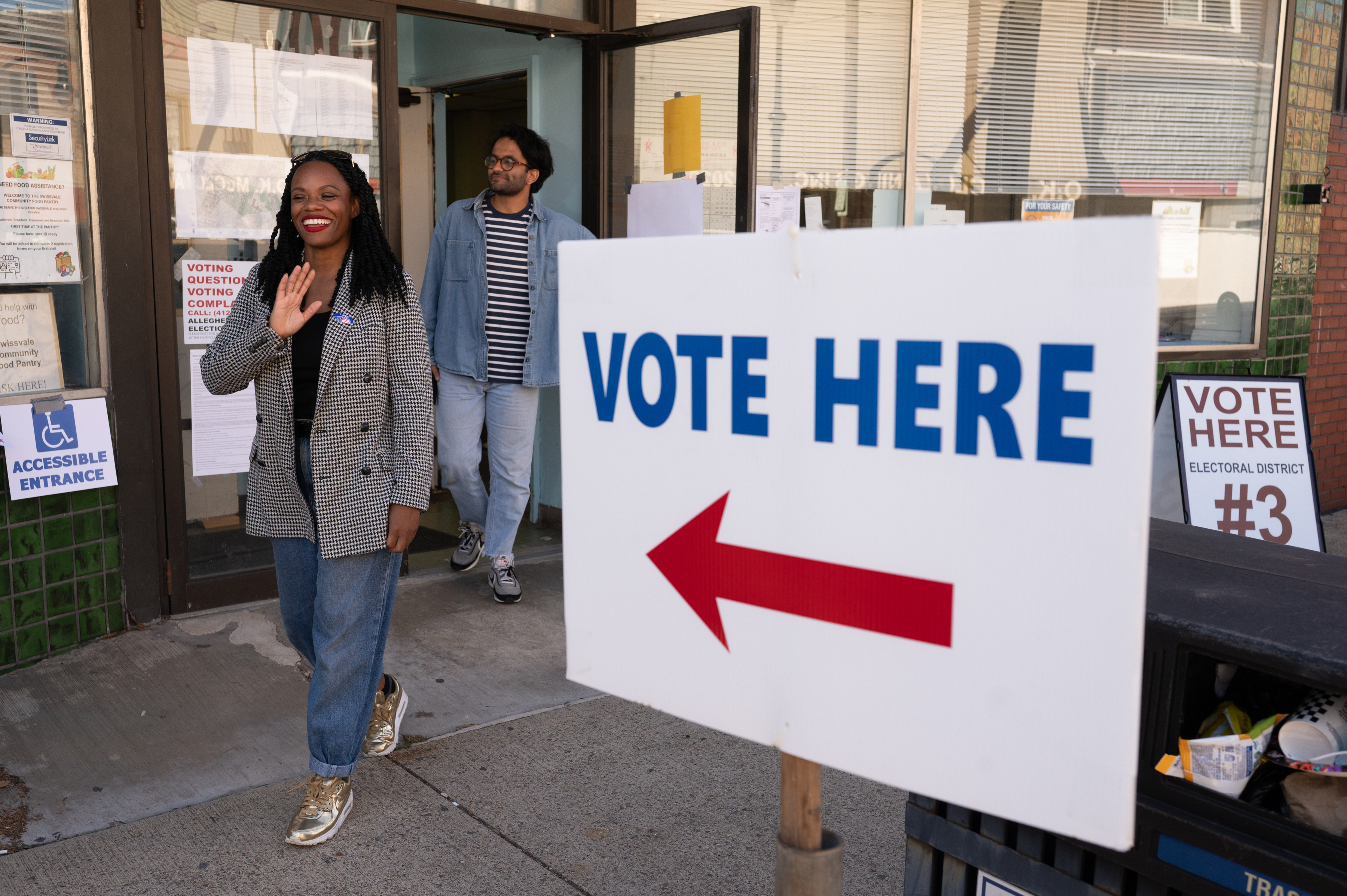Rick Santorum often points to his House and Senate victories in a Democratic-leaning presidential battleground state to argue that he gives Republicans the strongest shot at defeating President Barack Obama in November.
He just as often breezes past his 2006 Senate re-election defeat in Pennsylvania, where he lost by a whopping 18 percentage points. The race helped hand Democrats control of the Senate. And it made Bob Casey, the namesake son of a former Pennsylvania governor, the first Democratic senator from the state elected to a full term since 1962.
“It was a meltdown year” for Republicans, Santorum argues these days when pressed about that shellacking. He also claims he was punished by his constituents for standing firm on the unpopular positions he had held, among them supporting President George W. Bush and the war in Iraq. “I stood tall, stood for what I believed in.”
It’s interesting to note that the latest poll on the presidential match up in Pa. shows Santorum leading former Mass. governor Mitt Romney by 14 points. And more impressive, is that in the March 14 Quinnipiac University poll, Republican Pa. voters split 44-45 percent in a race between Santorum and Pres. Obama in Nov.
“One of the things I figured out when I was running in that tough election year, there's one thing worse than losing an election, and that's not standing for the principles that you hold,” Santorum said earlier this year.
The explanation has become somewhat standard for Santorum as he tries to convince a Republican electorate craving a nominee who can beat Obama that he's far more likely than GOP front-runner Mitt Romney to win come the fall.
But the pitch glosses over the facts.
Politics
In the 2006 race, Santorum ended up not only alienating his own conservative base but independents and conservative-leaning Democrats, as well.6
He was the No. 3 Republican in the Senate that year when Democrats made him a top target for defeat as they looked to wrest control of both houses of Congress from the GOP.
National Democratic Party leaders recruited the mild-mannered Casey to run for the Senate in hopes that his opposition to abortion and gun control would cut into Santorum's conservative base. Casey had previously won three statewide elections -- two terms as state auditor general and one term as state treasurer that was cut short when he was elected to the Senate.
Casey, like Santorum, opposed abortion rights -- effectively neutering Santorum on his bread-and-butter cultural issue. And Casey's family name added gold-plated anti-abortion credentials; his father pushed for and signed into law, as Pennsylvania governor, restrictions on abortion.
Santorum was vulnerable.
His reputation in Congress as a fiscal conservative and a scrappy partisan helped him, but his blunt talk about hot-button social issues -- abortion rights and same-sex marriage, his high profile efforts to keep alive Terri Schiavo, a brain-damaged Florida woman -- tended to alienate Pennsylvania voters and made him a target for criticism inside and outside the Capitol.
As his national profile rose, his standing at home suffered despite having represented the state for 16 years. He didn't help himself by releasing a book the year before in which he provided his blunt assessment on a series of culture issues. It may have fired up the GOP base but it just as likely alienated independents he'd need in the general election. They also were turned off by his hard line backing of Bush, whose own standing was suffering.
Santorum's residency also was in question; he owned homes in northern Virginia and a Pittsburgh suburb.
And he irked voters by using Pennsylvania tax dollars to help pay for his children's cyber-school education while his family lived in Virginia. The suburban Pittsburgh school district he claimed as his legal residence sought to recover more than $70,000; the state finally settled the dispute by paying the district $55,000.
Many Pennsylvania voters just didn't like Santorum in 2006. He unsuccessfully ran campaign ads to soften his image, spending millions of dollars on the effort, and devoted a section of his campaign website – “I heard it around the water cooler” -- to debunk perceived myths about him.
And Republicans started keeping track of what they saw as his doublespeak: talking like a conservative, but voting like a liberal. The Pittsburgh Tribune-Review, one of the state's leading conservative newspapers, seemed to have a list of such betrayals.
“Rick Santorum, the ‘conservative alternative’? “Hardly. He's nothing more than a bag with a hole in it,” the newspaper said.
Some GOP voters also were angered by Santorum's endorsement of moderate Sen. Arlen Specter over conservative Pat Toomey in the 2004 GOP primary. (Specter jumped to the Democratic Party in 2009 and lost his primary challenge in 2010 to Rep. Joe Sestak. Toomey, in turn, defeated Sestak, by a narrow margin.)
“Let's face it,” recalled Bill Green, a political analyst in Pittsburgh and old friend of Santorum. “Rick was a divisive character.”
The sentiment appears to have lingered.
A recent poll by Muhlenberg College's Institute of Public Opinion found that just under half, or 49 percent, of Pennsylvania voters still have an unfavorable view of their former senator, compared to 50 percent in November 2006.
The 2006 race was pricey; more than $40 million was raised. Santorum outspent Casey by roughly $8 million -- and still lost.
It was arguably the lowest point of a long political career in which he established a reputation for winning tough races.
Sixteen years before his Senate defeat, Santorum was a 32-year-old political rookie when he won his first of two House terms, upsetting a seven-term Democratic incumbent in suburban Pittsburgh with a largely shoe-leather campaign that was aided by a small army of collegiate volunteers.
In the fight for the 2012 GOP nomination, Santorum's fate will either resemble that 1990 race -- or the 2006 one.



